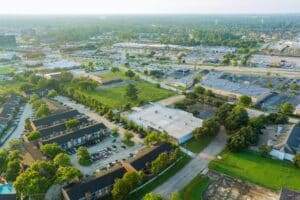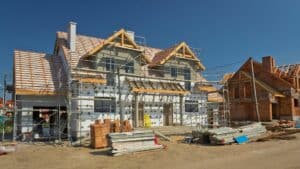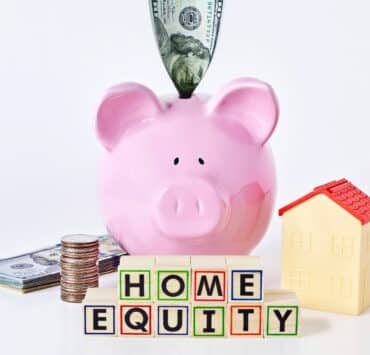Amidst economic uncertainties, the U.S. housing market grapples with soaring home prices, dwindling affordability, and a subdued real estate landscape. While a recession hasn’t materialized, challenges persist, prompting a critical analysis of potential solutions. In this blog, we delve into the complexities of the housing affordability crisis, explore pathways to restoration, and unravel the distinct trajectories of major metro areas.
The Current Landscape of U.S. Housing Affordability Crisis:
- Record High Prices: U.S. home prices have reached unprecedented levels, surpassing the affordability thresholds observed during the 2006 housing bubble.
- Depressed Home Sales: Existing home sales have plummeted, resembling post-global financial crisis levels, as buyers adopt a wait-and-see approach.
- Supply and Demand Imbalance: A confluence of high prices, elevated mortgage rates, and a shortage of homes has created a crisis of affordability, posing a challenge to both buyers and sellers.
Navigating the Challenges: Can the Housing Market Emerge From its State of Suspended Animation Without Drastic Measures?
-
Rising Incomes as a Panacea:
- Affordability restoration hinges on robust income growth.
- Contrary to expectations, a crash in home prices or a significant drop in mortgage rates may not be the only viable solutions.
- Wages catching up with higher costs could be the key to rejuvenating affordability.
-
Time as a Healing Agent:
- Dispelling the notion of an imminent home price crash, a time-based approach emphasizes sustained income growth over punitive price declines.
- The timeline for affordability restoration, assuming current trends persist, is estimated at approximately 3.5 years.
-
Regional Disparities:
- While the national market undergoes a transformation, dissecting regional trends reveals a more nuanced story.
- Cities categorized into boom-bust, no boom-but still a bust, boom-no bust, and no boom-no bust exhibit diverse trajectories, each influenced by unique local dynamics.
Pathways to Affordability: City-Specific Analyses Reveal Varied Timelines and Challenges
-
National Average vs. Metro Areas:
- Restoring affordability at the national level may take 3.5 years, but large metro areas face a more prolonged timeline of 5.3 years on average.
- The concentration of affordability challenges in major cities contributes to the extended duration.
-
Miami’s Unique Challenge:
- Miami stands out with an estimated affordability restoration timeline exceeding 10 years.
- The city’s elevated home price-to-income ratio, currently at 6.6, poses a formidable barrier to prompt resolution.
New Construction’s Role: Contrasting Existing Homes, New Construction Paints a Different Picture
-
Resilience in New Home Sales:
- New home sales defy the market’s subdued state, witnessing a robust rise of over 20%.
- Affordability challenges in new construction are alleviated by price deflation and attractive incentives offered by homebuilders.
-
Regional Focus in New Construction:
- New construction activity gravitates towards cities with a lower cost of living, aligning with the migration patterns of younger generations.
The Delicate Balance: As New Construction Emerges As a Positive Force, the Delicate Interplay of Interest Rates and Inflation Remains a Focal Point
- Federal Reserve’s Dilemma:
- The Federal Reserve’s role in managing interest rates is pivotal, striking a balance between stimulating home building and curbing inflation.
- While declining interest rates could expedite new construction, the risk of reigniting inflation underscores the complexity of the Fed’s decisions.
Anticipating a Path to Normalcy: Looking Ahead, a Gradual Return to Normalcy and Improved Affordability is Forecasted
- Timeframe for Market Recovery:
- The expected timeline for the U.S. housing market to transition towards normalcy and enhanced affordability extends into 2025.
- A cautious approach by the Federal Reserve aligns with this projection, foreseeing interest rate cuts in the latter half of the upcoming year.
Conclusion: As the U.S. housing market navigates the intricate web of challenges, a comprehensive understanding of income-driven solutions, regional nuances, and the evolving landscape of new construction paves the way for a measured and sustainable recovery. The journey towards restored affordability demands a strategic and collaborative approach, acknowledging the diverse trajectories of cities and the delicate equilibrium in the broader economic context.
Related posts:
 Increase in US Home Construction in 2023 Signals Robust Market Recovery
Increase in US Home Construction in 2023 Signals Robust Market Recovery
 Increased Housing Confidence Brightens 2024, But Buying a Home Still Tough
Increased Housing Confidence Brightens 2024, But Buying a Home Still Tough
 Canada Bans Foreign Homeownership Until 2027 to Help People Afford Homes
Canada Bans Foreign Homeownership Until 2027 to Help People Afford Homes
 Housing Market Crash in 2024: Unpacking the Truth Behind Rising Concerns
Housing Market Crash in 2024: Unpacking the Truth Behind Rising Concerns
 New Construction Homes Sales Increase in 2024: A Look into the Rising Trend
New Construction Homes Sales Increase in 2024: A Look into the Rising Trend



